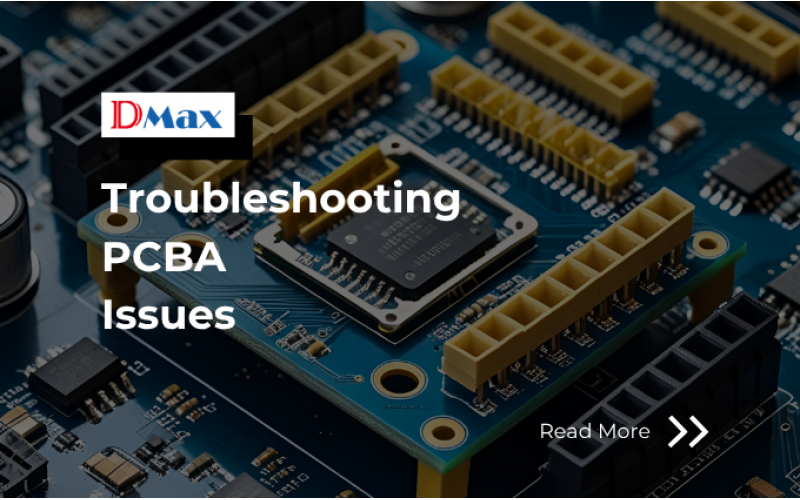
-
2025May
-
Troubleshooting PCBA Issues
Common PCBA Problems
Some of the most frequent PCBA issues include:- No power or short circuits: Caused by solder bridges, incorrect component placement, or faulty power supply connections.
- Intermittent failures: Often due to cold solder joints, cracked components, or poor connector contact.
- Overheating or abnormal current: May result from incorrect components, improper thermal management, or layout design flaws.
- Signal integrity issues: Caused by poor routing, insufficient grounding, or interference in high-frequency designs.
- Functional errors: Including firmware issues, wrong components, or misconfigured sensors and ICs.
Step-by-Step PCBA Troubleshooting Process
- Visual Inspection: Use magnification or AOI (Automated Optical Inspection) to check for:
- Misaligned components
- Solder bridges or cold joints
- Burn marks or physical damage
- Electrical Testing: Multimeters and oscilloscopes help verify:
- Continuity
- Voltage levels
- Short circuits and open connections
- Functional Testing: Apply power and test the PCBA against expected performance, checking each feature or output individually.
- X-Ray Inspection (AXI): Especially useful for hidden solder joints (e.g., BGA packages) to detect voids or misalignment.
- Thermal Imaging: Identify overheating components or hotspots under load to diagnose power or design-related issues.
- In-Circuit Testing (ICT) & Flying Probe Testing: For production batches, these automated methods ensure consistency and detect assembly errors.
- Firmware & Software Debugging: If the hardware is sound, check for firmware bugs, incorrect configurations, or communication issues between components.
Root Cause Analysis & Preventive Measures
- Once the issue is identified, trace it back to the root cause:
- Was it a design flaw, such as inadequate spacing or thermal relief?
- Was it a production error, such as incorrect soldering or component value?
- Was it a supply chain problem, like counterfeit or defective parts?
- Preventive actions may include:
- Design for Manufacturability (DFM) review
- Improved supplier verification
- More rigorous QC and testing processes
- Enhanced documentation for assembly
Final Thoughts
PCBA troubleshooting requires both technical expertise and a systematic approach. Whether you’re building a prototype or managing volume production, identifying and fixing issues early saves time, reduces costs, and strengthens product quality.
At Dmax, we offer not only PCBA manufacturing but also technical support and collaborative problem-solving during the prototyping and production stages. If you're struggling with yield issues or facing recurring failures, we're here to help diagnose and optimize your design.
